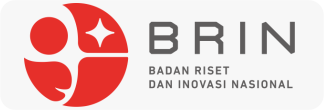Pengembangan Lembar Kerja Mahasiswa Mata Kuliah Praktek Tata Teknik Pentas Dan Cahaya
DOI:
https://doi.org/10.37802/candrarupa.v1i1.32Keywords:
Student Worksheet, TTPC, Prosess, QualityAbstract
Based on observations. Some lecturers have used MFIs and other lecturers not to use MFIs because the use of printed books is enough to be used by students in understanding the material taught. Seeing the facts, all lecturers from the concentration in the department stated that there was a need for the development of MFIs. This is the basis of the problem statement 1) How is the Development Process of Eye and Light Engineering MFIs? 2) How is the Quality of Development of Eye MFIs for Stage and Light Engineering? The research method used in the development of this MFI is research and development or Research and Development (R & D). Sukmadinata (2015) states that research and development or Research and Development (R & D) is a research method or approach to produce new products or improve existing products. Based on the results of the process of developing stage and light engineering MFIs for the 6th semester students of the 2015 UNESA FBS study program, the percentage scale obtained was 90%, 85% and 74%. The percentage scale obtained belongs to the good category. Quality aspects consist of: the accuracy of the contents of the book validator I gets a scale of 92% and validator II gets a scale of 83%. For the benefit aspect the book validator I got a scale of 83% and validator II got a scale of 83%. For completeness aspects, validator I gets a scale of 100% and validator II gets 93%. For linguistic aspects, validator I got a scale of 100% and validator II got a scale of 93%. With the scale obtained from these 4 aspects, it can be concluded that the product does not need to be revised. The researcher hopes that this product can be disseminated and used by lecturers and students extensively to improve the ability of lecturers in the arts, especially the practice of TTPC.
References
Roestiyah, N.K. 2008. Strategi Belajar Mengajar. Rineka Cipta. Jakarta. Sadiman,
A. S. 2002. Media Pendidikan : Pengertian dan Pemanfatannya.
Sannah, I. N. 2015. Pengembangan Lembar Kerja Mahasiswa Berbasis Pendekatan Saintifik dengan Model Discovery Learning Pada Materi Teori Atom Bohr
Smaldino, S.E., D. L.Lowther, and J. D. Russel. 2008. Intructional Technology and Media for Learning. Pearson Merrill Prentice Hall. United States of America.


















